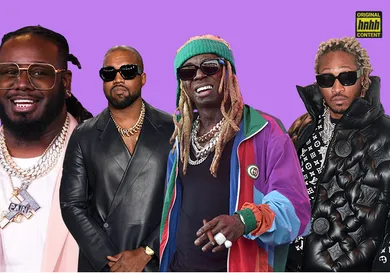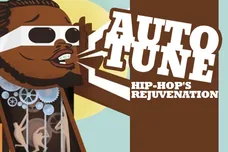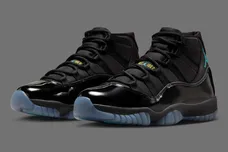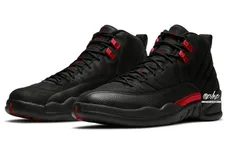When Dr. Andy Hildebrand introduced the revolutionary audio processor, Auto-Tune, in 1997, the music landscape was irreversibly transformed. The premise of the invention was simple: by isolating entwined frequencies and allowing producers to tweak pitch while still preserving a voice’s tone, the tool could seamlessly correct a singer’s off-key or wavering notes, thus making it possible for them to nail a song in as little as one take. Considering that prior to Auto-Tune’s invention, the process of landing the perfect take of a song required recording it several times and splicing together the best parts, this creation made the recording process drastically more expedient.
The first and perhaps most infamous implementation of the technology was Cher’s 1998 hit comeback single, “Believe,” which struck gold in its utilization of the tool and served as then-struggling Cher’s much-needed Hail Mary. Cher's producer, Mark Taylor, tried to keep their use of the vocal-processing effect under wraps by insisting to no avail that it was the work of a vocoder instead. The song went on to become the iconic singer’s top-selling single, and despite Taylor's best efforts, pushed Auto-Tune into the limelight. The vocoder, invented in 1928 to encode speech during World War II, was adopted by musicians (including several west coast hip-hop artists like Snoop Dogg and 2Pac), in the late 20th century to create a synthetic, robot-voice sound.
To put it in Layman’s terms, the difference between the two technologies is that the vocoder eliminates all traces of the singer’s natural timbre for an entirely synthetic sound, whereas the robotic sound that can be achieved via extreme use of Auto-Tune is the result of correcting pitch from one note to another. Auto-Tune soon phased the vocoder out of fashion and was adopted by artists in all corners of music, building up to the Auto-Tune craze that would soon ensue.
Kevin Winter/Getty Images
Enter T-Pain (2005)
When T-Pain’s fateful track, “I’m Sprung,” made its way onto the world’s airwaves in 2005, Pain cemented himself as the forefather of Auto-Tune and unknowingly spawned what would soon become one of the most divisive motifs in hip-hop. It was T-Pain’s pivotal use of the technology as a stylistic tool, rather than a mere aid to sharpen up flawed vocals, that pushed the vocal effect further into the mainstream and prompted others to experiment with it, as well. His imaginative adaptation of Auto-Tune in the mid-aughts heralded a new dawn in hip-hop music, and his ubiquitous influence can be seen in the musical stylings of many of today’s most popular artists across all genres.
T-Pain’s appropriately-titled 2005 debut album, Rappa Ternt Sanga, birthed two of the 35-year-old singer’s greatest hits to this day, “I’m Sprung,” and “I’m N Luv (Wit A Stripper).” The album was released at a transitional time in hip-hop; by the mid-2000s, gangster rap was on the outs (much to the dismay of purists, who had a whole hell of a lot more disappointment in store in that regard in the years to come), and the newly-surfacing crop of artists were starting to blur the lines distinguishing rap from R&B, and R&B from pop. With the release of this album, T-Pain amplified this trend of genre-melding music, using his vocal alterations to pioneer an entirely new sound.
In 2007, T-Pain released his sophomore album, Epiphany, which doubled down on the Auto-Tune with infectious, sex-centered songs such as “Buy U A Drank (Shawty Snappin’)” and “Bartender,” which were among the defining tracks of summer ‘07. His songs weren’t “deep,” so to speak -- they weren’t soul-bearing or overtly lyrical; they were sexy, fun, womanizing, and umm, yeah, pretty much about sex. These two albums’ impact on the global music landscape was immediate and all-encompassing; in fact, many of their subversive breakout elements have since become staple qualifications for radio-ready rap and R&B. Soon enough, Auto-Tune was dubbed T-Pain’s “thing.”
At the time, T-Pain’s seemingly uninhibited use of Auto-Tune was considered nothing short of radical. Some felt he used the vocal effect as a crutch, while others embraced that he had widened the parameters of sonic possibility. While his innovative, heavily-processed sound played a role in establishing him as a frequent dweller on the top charts during the pinnacle of his career, it arguably drew as much criticism as it did accolades. The rapper-turned-singer confessed that, while en route to the BET awards one year, he encountered Usher on his flight who pulled him aside and said, “Yo, you kind of f*cked up music. Like, completely.” Jay-Z also launched a high-profile vitriolic attack on Auto-Tune on his 2009 track, “D.O.A (The Death of Auto-Tune),” with declarations like, “I know we facing a recession / But the music y'all making going make it the great depression.” Old-heads and hip-hop purists followed suit, objecting fervently to the rise of Auto-Tune and arguing that lyrics, not melodies, should be the chief component of hip-hop music. In 2010, TIME ordained Auto-Tune No. 15 on its “50 Worst Inventions” list, asserting that the software “can make bad singers sound good, and really bad singers sound like robots.”
Christian Petersen/Getty Images
Here’s the thing, though: T-Pain sounds great without Auto-Tune. When T-Pain took to NPR’s “Tiny Desk Concert” series in 2014, the Tallahassee crooner’s resulting Auto-Tune-less renditions of “Buy U A Drank (Shawty Snappin’),” “Up Down,” and “Drankin’ Patna,” were so graceful and heartfelt they could prompt any listener to shed a tear while tenderly placing dollar bills at a stripper’s feet. The video of his formidable performance seemingly goes viral every other year like clockwork, reminding the internet all over again that T-Pain never needed Auto-Tune, Auto-Tune needed T-Pain.
Soon enough, Teddy Pain’s calling card became the industry’s plaything of choice, with hip-hop artists spinning the voice-altering software about a million different ways in the years following its popularization. Auto-Tune’s use in hip-hop, as well as its significant role in homogenizing the R&B and pop genres, remains a hot-button topic of discussion among both listeners and musicians alike. Nevertheless, many industry heavyweights such as Kanye West, Lil Wayne, Travis Scott, and Future have adopted Auto-Tune to the extreme, utilizing the vocal effect to propel themselves further into stardom.
808s and Heartbreak is Released (2008)
Michael Bezjian/WireImage/Getty Images
808s and Heartbreak was a cultural reset, simply put. Every single song on Kanye West’s contemplative fourth studio album exuded copious amounts of Auto-Tune, signaling a departure from the rapper’s archetypal raw, unfiltered sound up until that point. The album was released one year after the death of West’s mother, Donda, and in hindsight was a clear premonition of the sonic evolution West would endure in the following years. West’s liberal use of Auto-Tune on the record exacerbated its love-it-or-hate-it quality, although considering his role in popularizing the immensely popular “Chipmunk soul” style of the early 2000s alongside its ideator RZA and producers Just Blaze and The Heatmakerz, it should not have come as too much of a surprise. “Chipmunk soul” was labeled as such because it was inspired by the animated virtual band Alvin and the Chipmunks, which originated in the ‘50s. Chipmunk soul sped up the pitch of soul music samples to match the upbeat tempo of hip-hop music. The style became a Roc-A-Fella-era trademark, with Jay-Z, Cam’ron and the Diplomats, The Wu-Tang clan, and Yeezy himself (namely on his nostalgic 2004 album, The College Dropout) all adopting it.
Although 808s is not necessarily Kanye’s best album, the level of influence it was able to attain was-- and still is-- rarified air. On the album, West employed newfangled synth-warping gambits as he unloaded the agonizing loneliness and excruciating hardship he was undergoing at the time. Even with his heavily-layered vocal distortion throughout (singing isn’t West’s forte, after all), West, who enlisted the help of T-Pain himself during the writing process, still managed to be at his seemingly most vulnerable on the project. While it starkly juxtaposed Kanye’s prior albums, the project demonstrated Kanye’s unremitting growth as an artist as well as his impact on the direction of music in its aftermath.
Lil Wayne Takes On Auto-Tune (2008)
Lil Wayne’s signature Auto-Tuned declarations of love for both lean and women were a crucial (yes, crucial) part of the voice-altering software’s journey through hip-hop. While Wayne made an Auto-Tuned cameo on 808s and Heartbreak with his and Ye’s aggressive joint track, “See You In My Nightmares,” Wayne’s most momentous incorporation of Auto-Tune in a song was his 2008 track, “Lollipop.” While the song at no point exhibited Wayne’s infamous dextrous flow, it still managed to become his most successful single, heightening his colossal influence over the rap game, nonetheless. “Lollipop” was a mammoth success due to its catchy hook, its unironic, unfettered obscenity, and its substantial incorporation of Auto-Tune, which was still a relative novelty at the time and soon became a Weezy hallmark. The following year, Tunechi released his No Ceilings mixtape, which was almost entirely entrenched in Auto-Tune and is one of his most-celebrated projects. T-Pain initiated Auto-Tune’s prevalence in hip-hop as a whole, but Wayne and Kanye cemented the software as a modernist rap staple. For an in-depth analysis of “Lollipop” and its warranted yet somewhat mystifying popularity, click here.
Kevin Winter/Getty Images
Future Emerges (2010)
Then along came Nayvadius DeMun Wilburn, AKA Future. Since his emergence in 2010, Future’s drugged-out, hedonistic gripes, and pitch-corrected groans have propelled the Atlanta trap star to legend status. One of the most distinguished artists of the decade, Future is a creature of habit when it comes to both his overall sound and his lyrical content. Say what you want about Future, but the man fully embraces, rather than running away from his vices, even owning up to the fact that he “won’t enjoy life if it ain’t toxic,” on High Off Life’s “Ridin Strikers,” earlier this year. While the jury’s still out on whether Future’s ability to be so aptly self-aware of his own shortcomings yet still continue to unabashedly exhibit them is an awe-inspiring feat, or just plain toxicity at its worst, one thing is for sure: the man played a crucial role in legitimizing Auto-Tune.
Future’s music is characterized by intensely confessional lyricism that is heavily imbued with the vocal-warping effect. From the studio to the stage, Future’s robotic warbles are a key part of the 37-year-old rapper’s gratifying delivery. Future’s wide-reaching impact has generated several imitators (or appreciators, but Future seems to feel the former is most often the case) and seemingly made it a prerequisite for all trap music to be laced with the vocal effect in order to be regarded as any good. Naysayers have expressed feelings that Future’s Auto-Tune usage has become something of an old hat, restricting spontaneity in his own music and among that of artists who regard him as a blueprint for success. T-Pain himself came forward in 2013 to state that while he thought Future was a talented writer, he felt the rapper was not utilizing the voice-altering effect properly.
Prince Williams/Wireimage/Getty Images
Auto-Tune in the 2010s
The continued development of Auto-Tune throughout the 2010s was propelled forward by rappers like Travis Scott, Chief Keef, Young Thug, The Migos, Lil Uzi Vert, and a myriad of others. By 2020, hardly any facet of hip-hop hasn’t been infiltrated by the technology on at least some level. Despite his reductive take on the technology, even Jay-Z himself couldn’t resist dipping his toes into the realm of Auto-Tune, enlisting the help of Auto-Tune fiend, Travis Scott, as a producer for his 2013 album, Magna Carta Holy Grail. He again made use of the software on his and Beyoncé’s collaborative 2018 track, “APESHIT,” proving that even HOV isn’t immune to the technology. Auto-Tune became so commonplace over the course of the 2010s that many have even come to consider the sound-enhancing technology to be just as much of a musical instrument as a piano or guitar.
Today, rappers hit the studio with Auto-Tune already geared up and in full-effect as they record, rather than adding it to a track during the editing process. Rappers deliver Auto-Tuned ad-libs, entirely Auto-Tuned live performances, and even comically fall off stages in Auto-Tune. On a broader scale, the internet has given way for just about anybody with an iPhone and WiFi access to become a rapper, and the number of people who believe they have the knowledge and skills to do exactly that has never been higher. Technological advancements have made it possible for everyday people to recreate the vocal effects of their favorite rappers from their own homes with ease; in fact, there is even a Reddit thread that explains (in excruciating detail) how to emulate Travis Scott’s signature vocal enhancement effect. Given the software’s ever-increasing popularity, it is likely that Auto-Tune is not going anywhere, and if anything will only continue to evolve throughout the coming decade.







